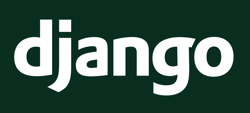Target Audience
![]() There’s a large body of technical information out there about content management systems and frameworks, but not much written specifically for decision-makers. Programmers will always have preferences, but it’s the product managers and supervisors of the world who often make the final decision about what platform on which to deploy a sophisticated site. That’s tricky, because web platform decisions are more-or-less final — it’s very, very hard to change out the platform once the wheels are in motion. Meanwhile, the decision will ultimately be based on highly technical factors, while managers are often not highly technical people.
There’s a large body of technical information out there about content management systems and frameworks, but not much written specifically for decision-makers. Programmers will always have preferences, but it’s the product managers and supervisors of the world who often make the final decision about what platform on which to deploy a sophisticated site. That’s tricky, because web platform decisions are more-or-less final — it’s very, very hard to change out the platform once the wheels are in motion. Meanwhile, the decision will ultimately be based on highly technical factors, while managers are often not highly technical people.
 This document aims to lay out what I see as being the pros and cons of two popular web publishing platforms: The PHP-based Drupal content management system (CMS) and the Python-based Django framework. It’s impossible to discuss systems like these in a non-technical way. However, I’ve tried to lay out the main points in straightforward language, with an eye toward helping supervisors make an informed choice.
This document aims to lay out what I see as being the pros and cons of two popular web publishing platforms: The PHP-based Drupal content management system (CMS) and the Python-based Django framework. It’s impossible to discuss systems like these in a non-technical way. However, I’ve tried to lay out the main points in straightforward language, with an eye toward helping supervisors make an informed choice.
This document could have covered any of the 600+ systems listed at cmsmatrix.org. We cover only Drupal and Django in this document because those systems are highest on the radar at our organization. It simply would not be possible to cover every system out there. In a sense, this document is as much about making a decision between using a framework or using a content management system as it is between specific platforms. In a sense, the discussion about Drupal and Django below can be seen as a stand-in for that larger discussion.
Disclosure: The author is a Django developer, not a Drupal developer. I’ve tried to provide as even-handed an assessment as possible, though bias may show through. I will update this document with additional information from the Drupal community as it becomes available.
Continue reading “Drupal or Django? A Guide for Decision Makers”

